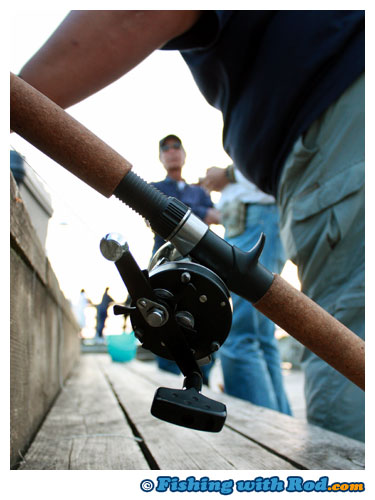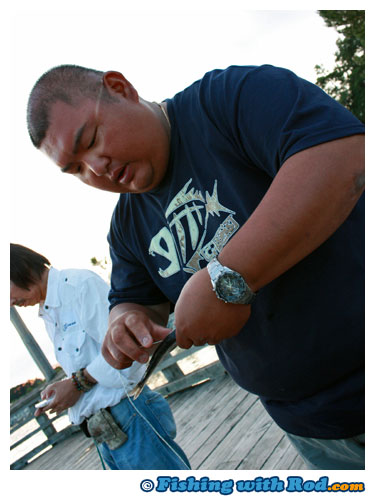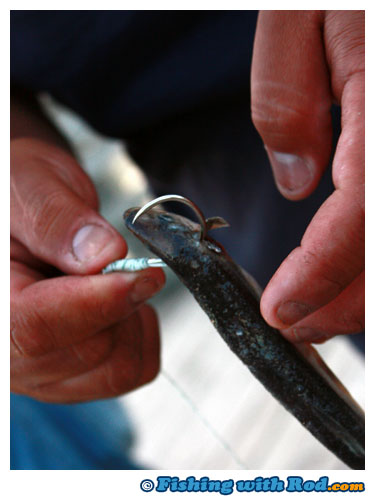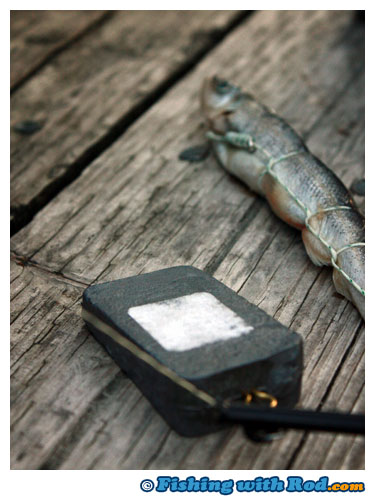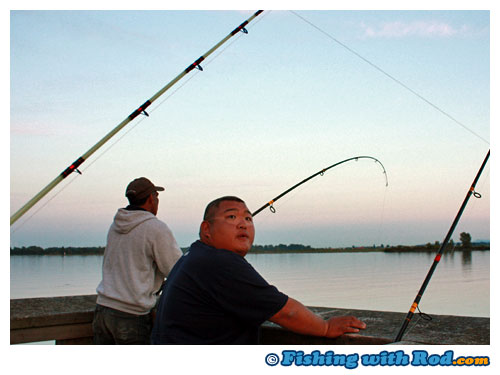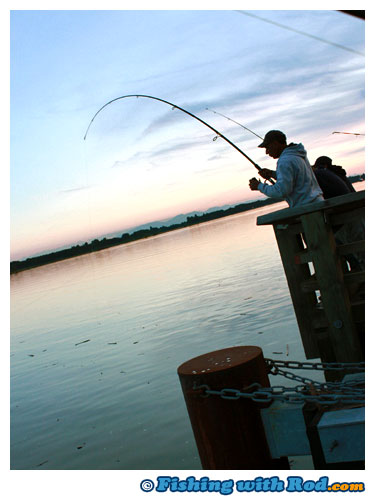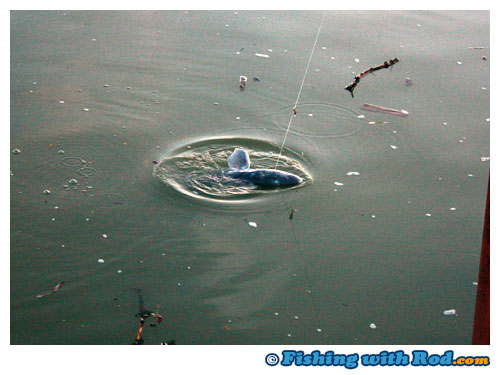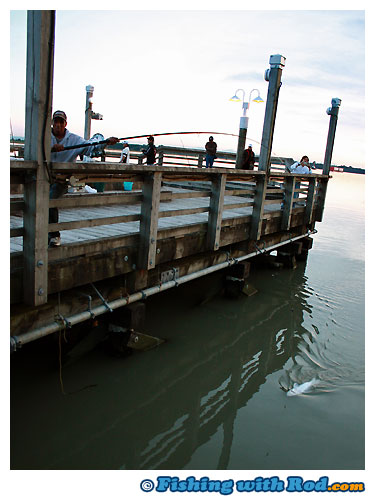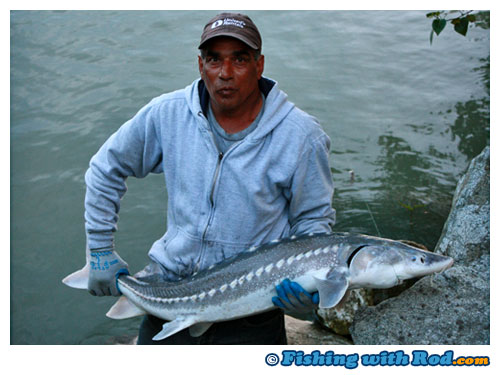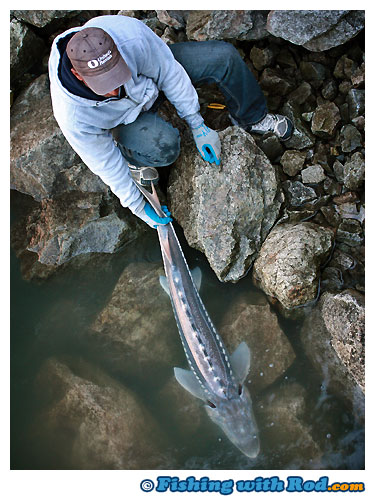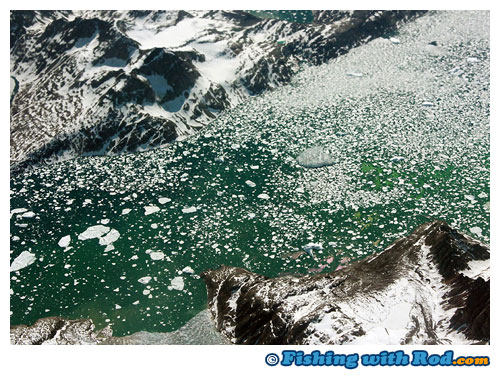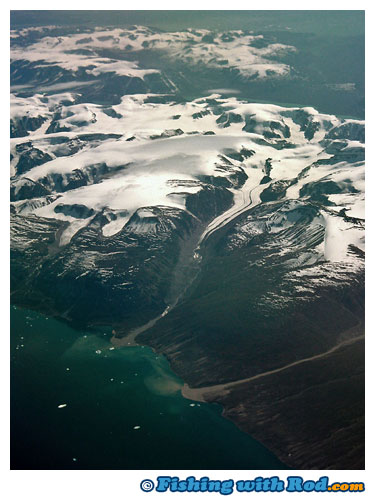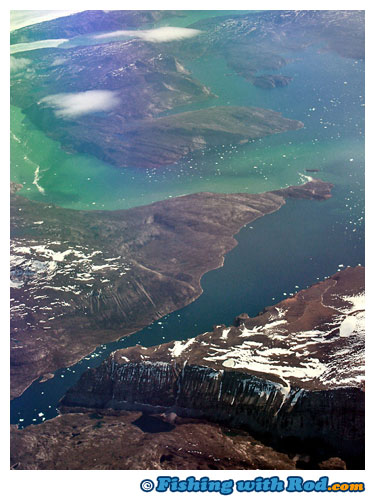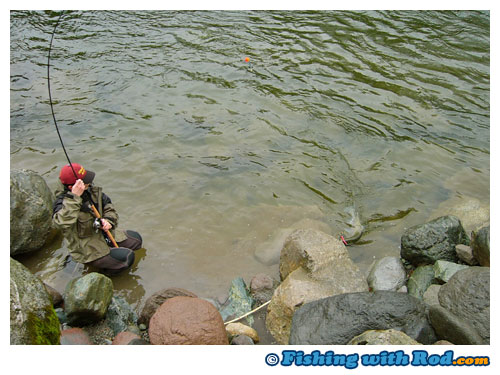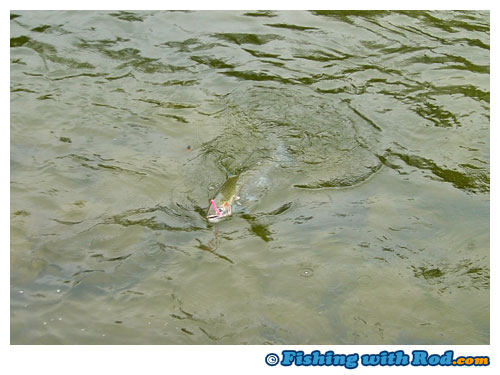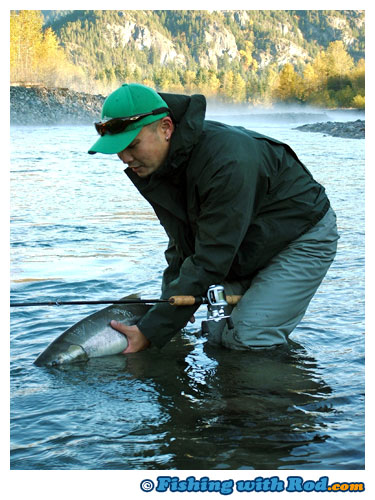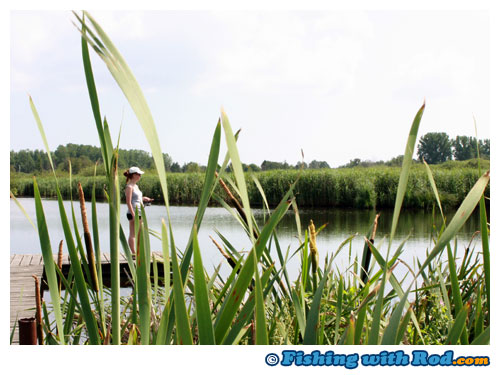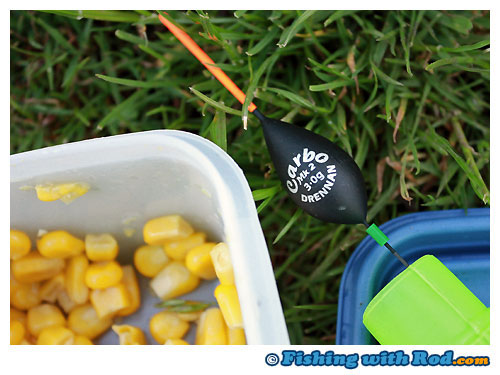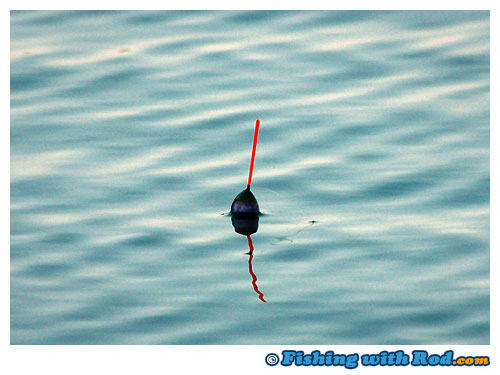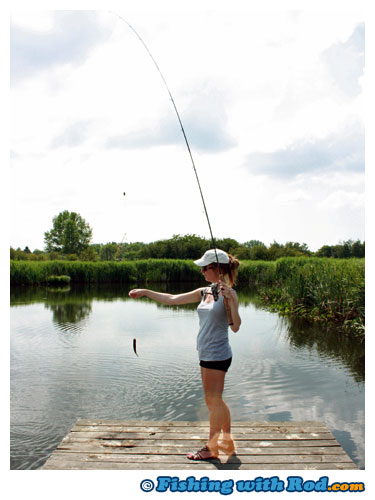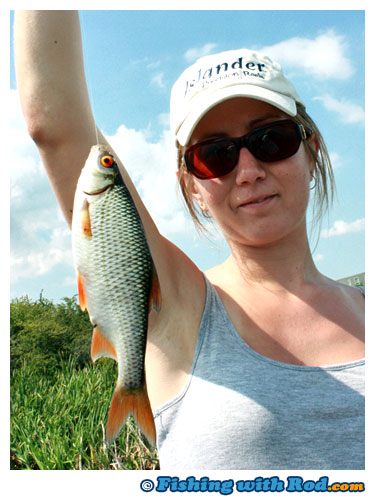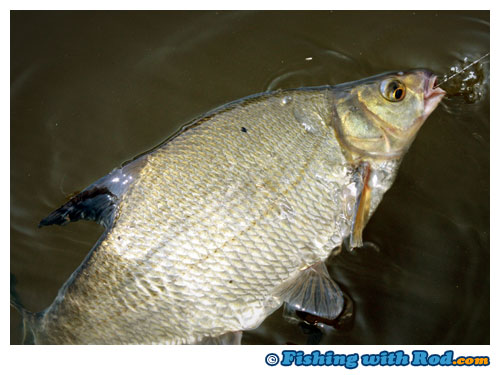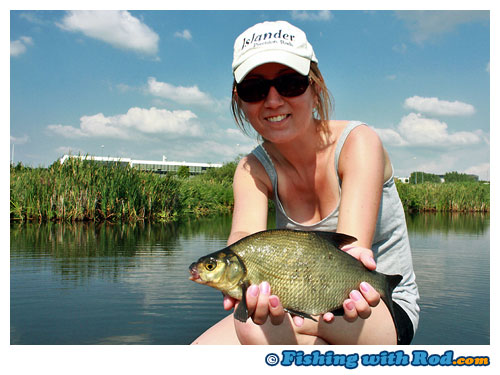With less than a week of stay left in Denmark, I wanted one more chance to tackle the lake that we have boated in the last couple of weeks. During our first outing, we all hooked a fish each but I did not manage to land my fish. During our second outing, we hooked a fish each again but both were lost. It has been a frustrating ordeal, even though it should not be too surprising because we are after all wading into a new system. Without a depth sounder, an electric motor and proper anchoring system, it steepens the learning curve.
Perch is, after all, a carnivorous species that aggressively attacks whatever swims within its sight. They are also very abundant due to their ability to colonize and feed. There were really no reasons for us not being able to catch more, beside being at the wrong spots where the fish were not schooling.
There are still many unknowns, which I am eager to find out. Since the weather was still very warm and calm, we decided to give it a third attempt this evening. After an early dinner, we arrived at the dock at 6:30pm. Luckily there was a person who seemed to be a local old timer, so Nina’s brother Rune was able to gather some local knowledge. He pointed out a couple of specific spots where perch fishing is quite productive, which are opposite to the side of the lake where we have been focusing.
I decided to take a boat out on my own while Nina and Rune shared one, mostly because I decided to flyfish. Perhaps these fish would be more eager to bite if the presentation was slowed down a bit.
Our first stop had fair amount of surface activity, which was a good sign. Rune reported a bite immediately, Nina soon hooked the first fish of the evening. It was a perch that made a brief appearance on the surface before falling off the hook.
We moved to the second location not long after as some swimmers had taken over the area. Once anchored, I observed the surface and watched more small fish rising for a feed. A closer examination of the turbid water revealed that there were in fact thousands of these fish, swimming in schools just below the surface. With so much food in the water, I was no longer wondering why we were not getting as many bites as we should.
My first hook-up brought a perch similar to Nina’s in size to the boat, but it also fell off the hook rather quickly once leaving the water. The following cast also resulted in another hook-up, but it was a perch at its infancy, almost as small as the spinner that it tried to ingest.
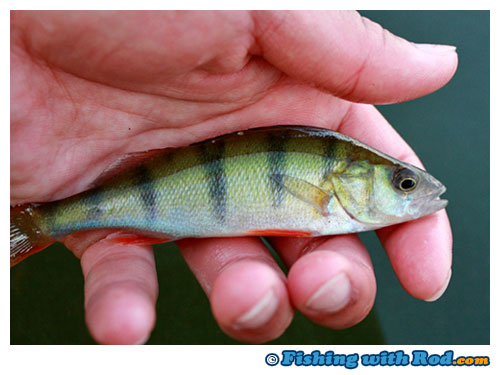
Could it get smaller?
After a bit of action on the spinning rod, I switched to the fly rod. A minnow pattern was my choice, since these perch most likely feed on small baitfish. While stripping in my fly, I accidentally foul-hooked one of the small baitfish. The size 2 hook penetrated its abdomen, instantly killing it. It would not go to waste of course, because I handed to Rune so he could use it as bait under a float.
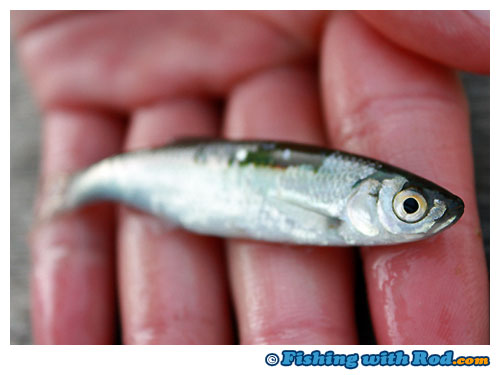
Yes, it could get smaller!
Until this evening I had no idea what were swimming around on the surface. These tiny baitfish are called bleak (Alburnus alburnus), a rather typical freshwater species that make up the base of the food web in European lakes.
I decided that it was time for another move. During our past two outings, we would anchor at one spot for a rather long time without detecting a bite. Perhaps being constantly on the move after thoroughly fished different areas would eventually lead me to multiple hook-ups.
The tactic definitely worked! Each spot where I anchored would produce several bites before fading away, which signalled me to move to the next spot. The fishing especially improved after 9:30pm, when the sun began to set. The northern shoreline was completely shaded, which seemed to make these fish feed without hesitation. At one point, I watched one fish chasing the spinner to the surface, pausing slightly as I re-submerged my lure after taking it out and attacking it again. The fly rod was also rewarded with a couple of aggressive fish.
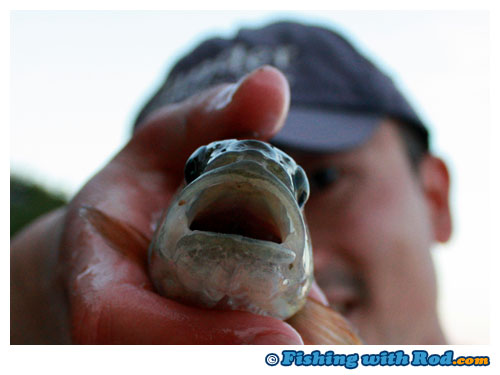
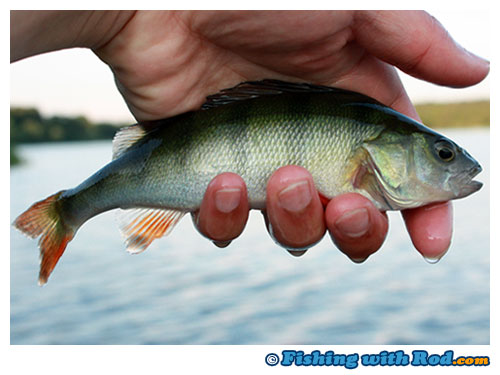
As I made my way back to the dock at around 10:30pm, I watched large perch hunting on the surface with their dorsal fin and humped shoulder sticking out at times. The evening ended with thousands of bleaks dancing on the surface in front of the dock, where I was able to hook several fish in a row and watched more feeding frenzy on the surface. In total, I was able to connect with just over a dozen fish and land seven of them.
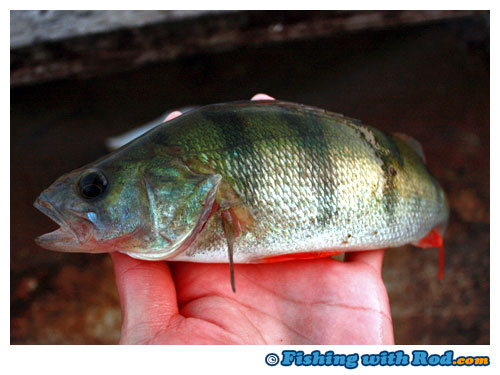
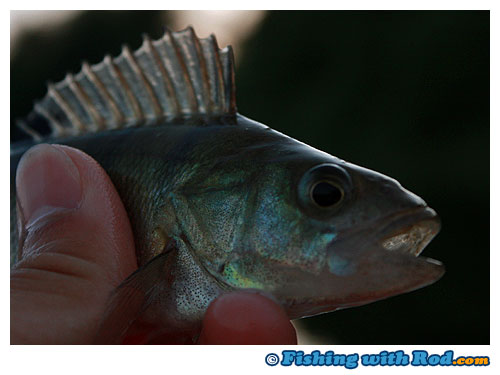
This evening outing was a satisfying finish of our exploration of a new lake. Although we did not find any exceptionally large fish, these smaller hunters were just as exciting to catch when the bites were consistent. Perhaps our return in the future will lead us to some trophy perch or pike.
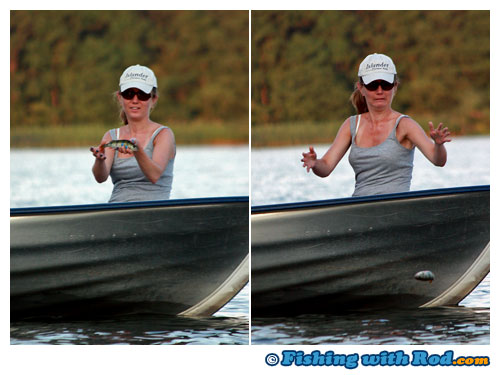
Spiny perch can be hard to grip onto!
